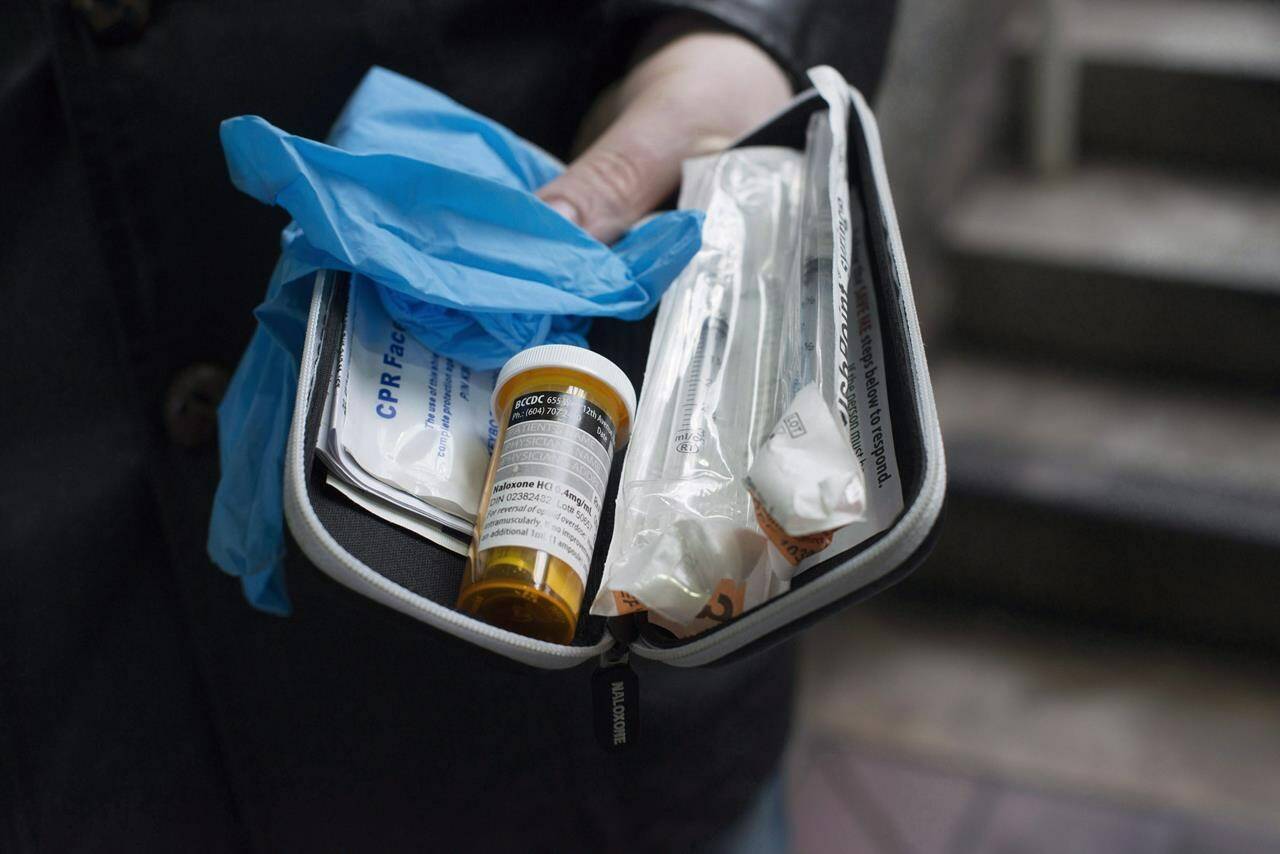New federal government research says that stigmatizing views about opioid use disorder — unfair perceptions and disapproval of people who take these drugs — continue to be held by a significant portion of the population.
One in four respondents held stigmatizing views against people who use opioids, one in four had sympathetic views, and half held a mix of the two, with the rates holding steady since the research was first conducted in 2017.
Prepared for Health Canada, the research was carried out from December 2021 to January of this year, and the results were recently made publicly available.
Opioids, which can be obtained by prescription or illegally, are a type of pain-relieving drug and may also induce feelings of euphoria.
Since January 2016, over 29,000 Canadians have died from opioid-related causes, according to the Public Health Agency of Canada.
While advocates say they are cautious about some of the research results, they agree the government can do more to reduce stigma against people who use opioids.
Eugenia Oviedo-Joekes, a professor at the University of British Columbia’s School of Public Health, said the methodology of the poll means the results can’t be generalized to the broader Canadian population.
“It’s a self-selected group,” she said, noting the poll invited participants of an online panel to voluntarily complete the survey in exchange for rewards.
Despite the survey’s limitations, its findings could still be useful, said Oviedo-Joekes, who researches addiction.
While people know that the opioid crisis is an issue, she said, “I think we need to now work on decoding for people why this is an issue.”
The report said that teens aged 13 to 15 have less familiarity with opioids and the crisis, noting that four in five of them name their parents as one of their most trusted information sources.
Oviedo-Joekes says parents of teens generally aren’t talking to their kids much about harm reduction for opioids.
While about 70 per cent of parents of those young people say they talk to their kids about drugs in general, only one in three have talked about drug or opioid overdoses, and 17 per cent have discussed how to get help for opioid use.
If teens think parents are a good information source, but those parents are not talking to the kids about the key issues, she said, “Wow, there is an opportunity there to work.”
The findings present an opportunity for the government to target parents in campaigns, said Oviedo-Joekes.
“Youth are also dying of overdoses.”
Andréa Richer, a Health Canada spokesperson, said in 2018 the department launched a multi-year campaign to raise awareness of the opioids crisis, educate Canadians on the risks and highlight the effects of stigma against people who use drugs.
The government has been running an awareness program for teens and young adults over the last four years, involving over 1,100 high school sessions, Richer said in a statement.
Health Canada has also launched a website to share “real stories of how substance use stigma impacts people,” she said.
Garth Mullins, a member of the Vancouver Area Network of Drug Users, said despite federal public awareness campaigns to reduce stigma against opioid use, the government’s own actions undermine those efforts.
“They think stigma is just out there in the world. All the little people have bad ideas in their heads about drug users,” Mullins said.
The source of the “bad ideas” is from the government itself, through its laws and policies which promote a prohibition approach to illicit drug use and harm people who use drugs by treating them as “outsiders,” he said.
“Who do we criminalize and arrest, and who’s not criminalized and arrested? That’s where people get their ideas about stigma from,” said Mullins.
The way that police, the medical system and the government work creates and reproduces stigma against people who use drugs, he said.
Both Oviedo-Joekes and Mullins pointed out the survey makes no mention of a safe supply of drugs or decriminalization of personal drug possession, two solutions for which advocates have been long calling to address the opioid crisis and the toxic drug supply that is driving it.
Mullins said “the best advertisement for not stigmatizing drug users” would be for the federal government to declare a public health emergency about the opioid crisis, akin to what was done in British Columbia in 2016.
“They ought to do it. It doesn’t necessarily revolutionize the world, but it certainly can help them move a bunch of small regulatory hurdles. And it would send this giant message about stigma, if this is a public health campaign.”
This report by The Canadian Press was first published July 28, 2022.
—-
This story was produced with the financial assistance of the Meta and Canadian Press News Fellowship.
Erika Ibrahim, The Canadian Press

